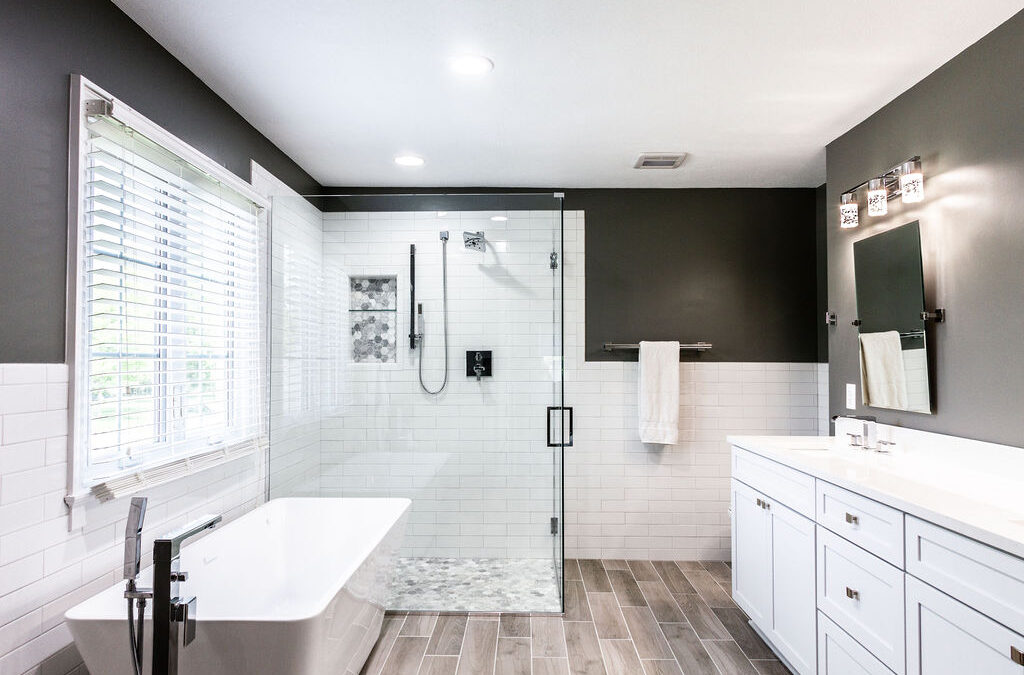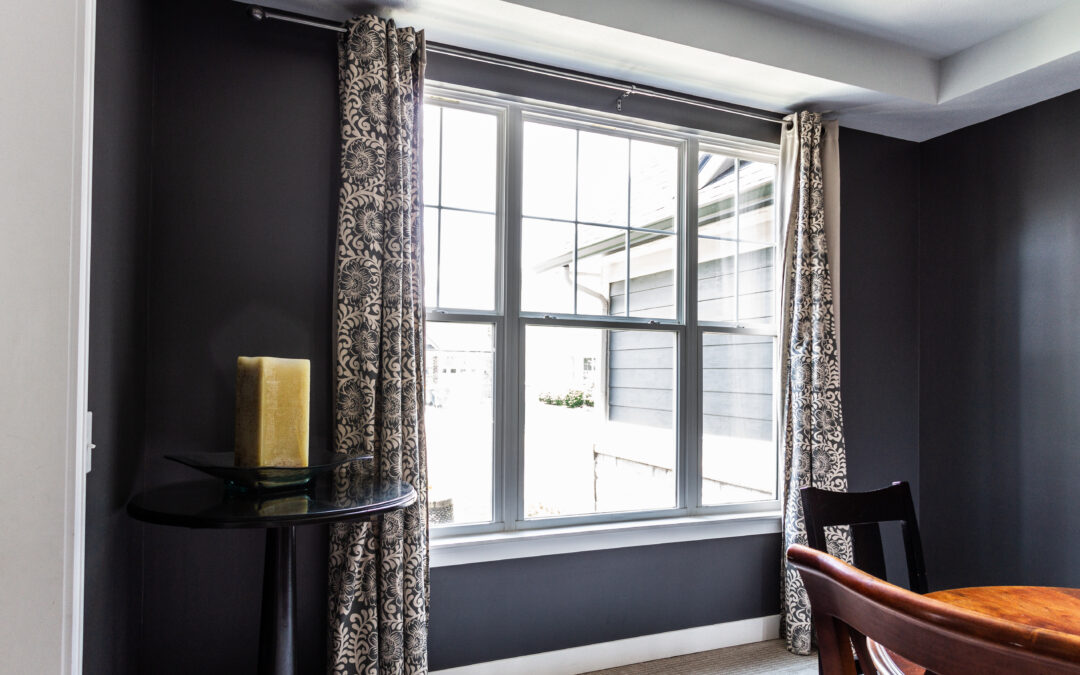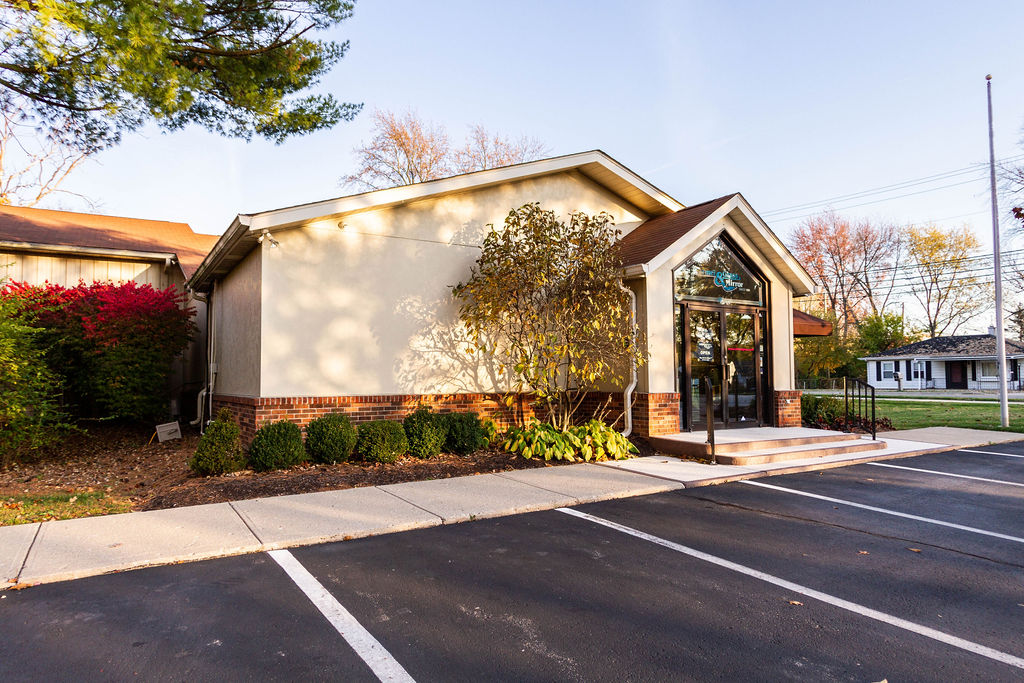Headers, frameless, barn doors, sliders… you’ve probably heard all of these terms when shopping for a shower enclosure. They are all important features of a glass shower enclosure and are chosen based on the layout and size of your shower, your visual preference, and overall budget. Our experts are here to help you design something that is not only safe, but also that you will love for years to come.
Explore our glossary of shower types and glass choices
Semi-frameless enclosures most often uses 3/16” or 1/4” thick glass and you will see more hardware around the top and sides of the enclosure. They are called semi-frameless because the swinging door does not have hardware around it – you will see the glass edge on the door. Carmel Glass & Mirror personally recommends using 1/4” thick glass for these enclosures, but you may come across thinner glass options while you’re shopping. The thinner the glass, the more flex the glass panels may have. Semi-frameless enclosures use a swing-out door and a magnetic catch. Our experts also recommend mounting the hardware through the glass for a more stability. You will see more metal hardware on a semi-frameless enclosure. See images of semi-frameless enclosures in our gallery.
Frameless enclosures are made with 3/8” or 1/2” thick glass and typically require less hardware because they are more stable. Also called “heavy glass enclosures”, frameless enclosures use a door that swings 90 degrees in and out of the shower. Carmel Glass & Mirror has so many options to choose from to make your shower the showstopper of any bathroom. See images of frameless enclosures in our gallery.
Barn Door enclosures utilize a sliding mechanism along a top metal, or even glass, bar. These are not considered semi-frameless, but rather heavy glass enclosures. This glass enclosure can be designed with either a single sliding or double sliding door, and operates by rolling across the top track, eliminating the need for any side or bottom track/channel. See images of barn door enclosures in our gallery.
A bypass enclosure operates with two glass sliding panels/doors. These enclosures are considered semi-frameless as there will be more track and hardware around the perimeter. See images of bypass enclosures in our gallery.
Headers – this is any hardware you would find across the top of a glass enclosure. Headers are found on semi-frameless enclosures, as the glass is thinner and requires the stabilizing “header” to operate properly. Barn and bypass shower doors will also have headers, which serve as the necessary sliding track. Headers can be eliminated by choosing a thicker glass (3/8”) and using a support bar if needed. See examples of showers with headers in our gallery.
Wondering how to choose your shower glass? Our onsite estimators at Carmel Glass & Mirror have been measuring showers in the Indianapolis area for over 30 years. We are ready to help you choose your shower glass so that you will be happy for years to come! Our customers constantly tell us how their bathrooms feel like a spa retreat, and yours can, too!
We will assess the water spray, size of the shower stall, available space, and construction of the shower materials to help you choose the best enclosure. A Barn door – or any sliding enclosure – is an excellent choice if the commode or vanity may interfere with the operation of a swinging door. A smaller shower stall may best be suited for a semi-frameless enclosure. For a larger shower with new tile work, we might suggest a frameless enclosure to show off as much of the shower tile as possible. Let our experts help you bring your ideas to reality!
We Can Help!
Let our glass experts help you decide which shower type is best for your bathroom! Stop in our showroom to see the many displays and shower examples or to speak with our experienced representatives.



